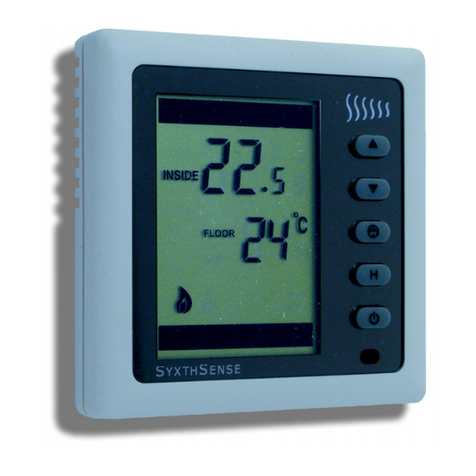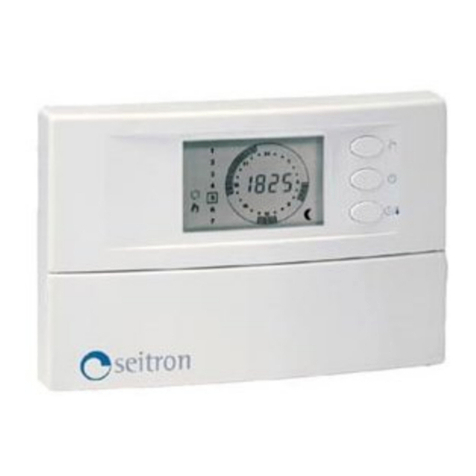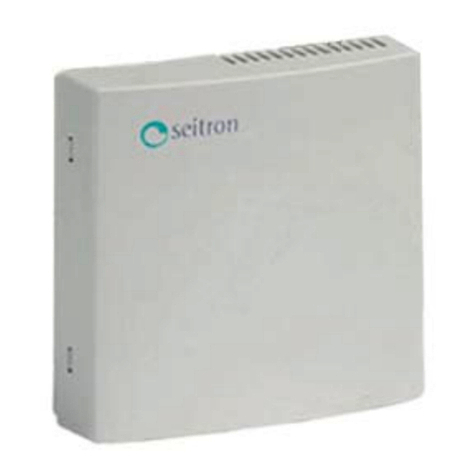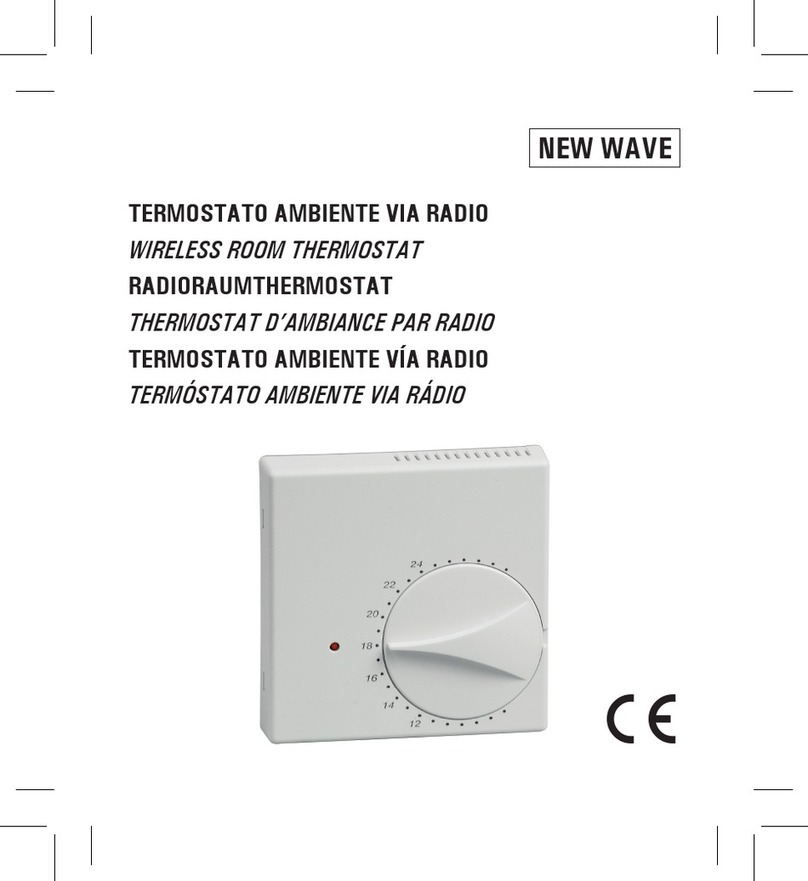
SyxthSense Ltd
Online Store: www.syxthsense.com Copyright ©2004 SyxthSense Ltd – 07/2004
Enquiries: T: 0870 20 80 100 F: 0870 20 80 200 PS TH6.21 – 4/6
System Start-Up Cont’d.. In ‘Test’ mode the thermostat continuously issues On and Off signals to the receiver every about 3
seconds. Position the receiving unit as close as possible to the desired final place. Turn on the
receiving unit and execute the self-learning procedure by pressing its relevant button. Once the
thermostat’s address has been learned, the relevant relay output should continuously toggle
between On and Off state, every 3 seconds.
This output state in the receiver is also displayed by its LED. If this happens the thermostat is
correctly communicating with the receiver. When positioning the thermostat in the desired room,
ensure that they still communicate well, checking the relevant output which should be continuously
toggled.
If the thermostat is placed too far from the receiver, the relevant relay output will not toggle and
remain stuck in the On or Off state: this means that the thermostat must be positioned in another
place, closer to the receiver or as far as possible from metal sheets or reinforced cement walls which
could weaken the radio signals. The signal quality can be monitored in the receiver unit, please see
the receiver instruction for more information.
Once the optimal position is found, move the selector (1) to the ‘Comfort’ or ‘Program’ position to
stop the test and to enable the normal operation. Proceed with the mechanical installation.
Mechanical and Electrical
Installation For installation of DTP A80 BC see the following:
Fix the thermostat base plate to the wall through the two screw holes with distance between axes of
60 mm. While operate with tools in the screw holes, be careful not to damage the internal circuits or
any other component. This thermostat does not need connection to any electrical wiring, because it
was developed to be a wireless thermostat. However it is available an external sensor input (9) Fig.
5, see “Remote sensor selection” section for further information. After inserting batteries and testing
operations, close the thermostat by carefully positioning the panel so that the knob shaft matches its
hole, then slightly press the panel in order to make the four plastic teeth snapping. Ensure that the
selector matches the relevant slot on the plastic cover. Reinsert the knob by placing it in the correct
angle so that it matches correctly its shaft, then push it until it snaps. For a correct room temperature
regulation the thermostat should be installed far from metal sheets and heat sources. Avoid to fix it
on a particularly hot or cool wall. To determine the correct position the user must be sure that the
radio signals are correctly received by the receiving unit.
Knob Rotation Limitation It is possible to limit the rotation range for the set-point knob by following these steps:
1. Remove the knob using a small screwdriver, place it in the slot (11) visible in the Fig. 3 and Fig. 4
apply a slight pressure.
2. Pick up the plastic pins (7) parked at one side of the knob area and set them (6) as in the example
of Fig. 4. In this example the rotation range (5) is reduced as in the shown angle.
3. Reinsert the knob by placing it in the correct angle so that it matches correctly its shaft, then push
it until it snaps.
Remote sensor
selection In order to connect to DTP A80 BC a remote sensor alternative to the internal one, remove the
jumper JP1 on the thermostat board, which is located in the bottom right side of the thermostat,
underneath the set-point knob (see Fig. 5). Ensure to use the correct remote sensor type and
respect the maximum wire length, then connect it to the two terminals (9) Fig. 5. If there is no need of
external sensor, keep the jumper JP1 inserted as default, so that the internal sensor is used.
Maintenance The wireless thermostat does not need any particular maintenance operation.
The supply batteries must be replaced with new ones, when the red indicator LED (2) flashes. It
flashes once every about 20 seconds. The batteries must be always replaced even if the thermostat
is often kept turned off. To replace the batteries, open the thermostat’s plastic box, see the
‘Mechanical description’ section, remove the old batteries, ensure that the new batteries are of the
right type: two 1.5V= alkaline AAA type. Insert the new batteries respecting the polarity: the symbols
+ and - .
In Fig. 5 is visible the battery internal location (8). After inserting batteries, and also at any time, it is
possible to perform a battery-check by pressing for a while the reset button (12) visible in Fig. 5
(leaving the selector (1) in a position different from ‘Off’, otherwise the ’test’ mode is entered) .
At the reset, the red led (2) Fig. 5 turns on for 2 seconds to display the correct insertion of the
batteries and the correct operation of the thermostat. In case you want to force a temperature
sampling and transmission it is sufficient to move the selector (1) to the ‘Off’ position or from the
‘Off’ position. This will result in an immediate update at the receiving side and the type of command
(’on’ or ‘off’) is displayed through the led indicator (2): a short flash stands for an ’off’ command
meanwhile a long flash stands for an ‘on’ command.





























